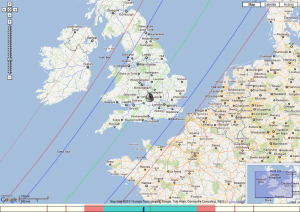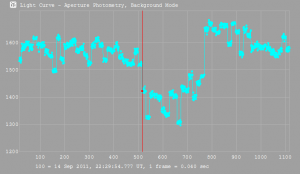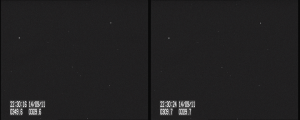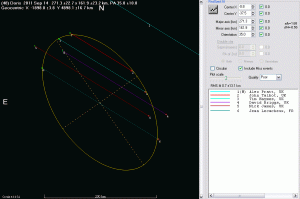This was my second positive asteroid occultation. It featured a faint star (mag. 12.3), a low drop in magnitude (dM) and a very close Moon (just 18° away).
- Predicted event time was 22:30:00 UTC for my observing position.
- Predicted maximum duration was 18.0 seconds with a 0.3 magnitude drop.
- Position was 32 km from the predicted central line in a SE direction between centre line and path edge.
- Calculated probability of seeing the occultation was 98.0%.

I recorded 640ms integrations using a Watec 120N video camera on a 200mm F/4 Newtonian telescope. Video was captured via a USB2 capture device on a laptop with VirtualDub software. I used a timestamp from a Blackbox GPS video time inserter.
The asteroid was brighter than the star and was clearly visible slowly approaching the star for 45 minutes before the occultation.
This is the light curve for the event from video analysis in Tangrav1.3 software. The blue line is the measured intensity of the occulted star. The vertical red line marks the beginning of the occultation. Frame count on the x-axis and star intensity on the y-axis.

| Start | 22:30:11.22 | ±0.33s |
| End | 22:30:21.46 | ±0.33s |
| Duration | 10.24s | ±0.66s |

There were several other successful observations of this occultation and the preliminary chord diagram can be seen in the following diagram. Each line is an observer’s observation; the time interval when they saw an occultation. An estimate of the size and shape of the asteroid can be made from these.
